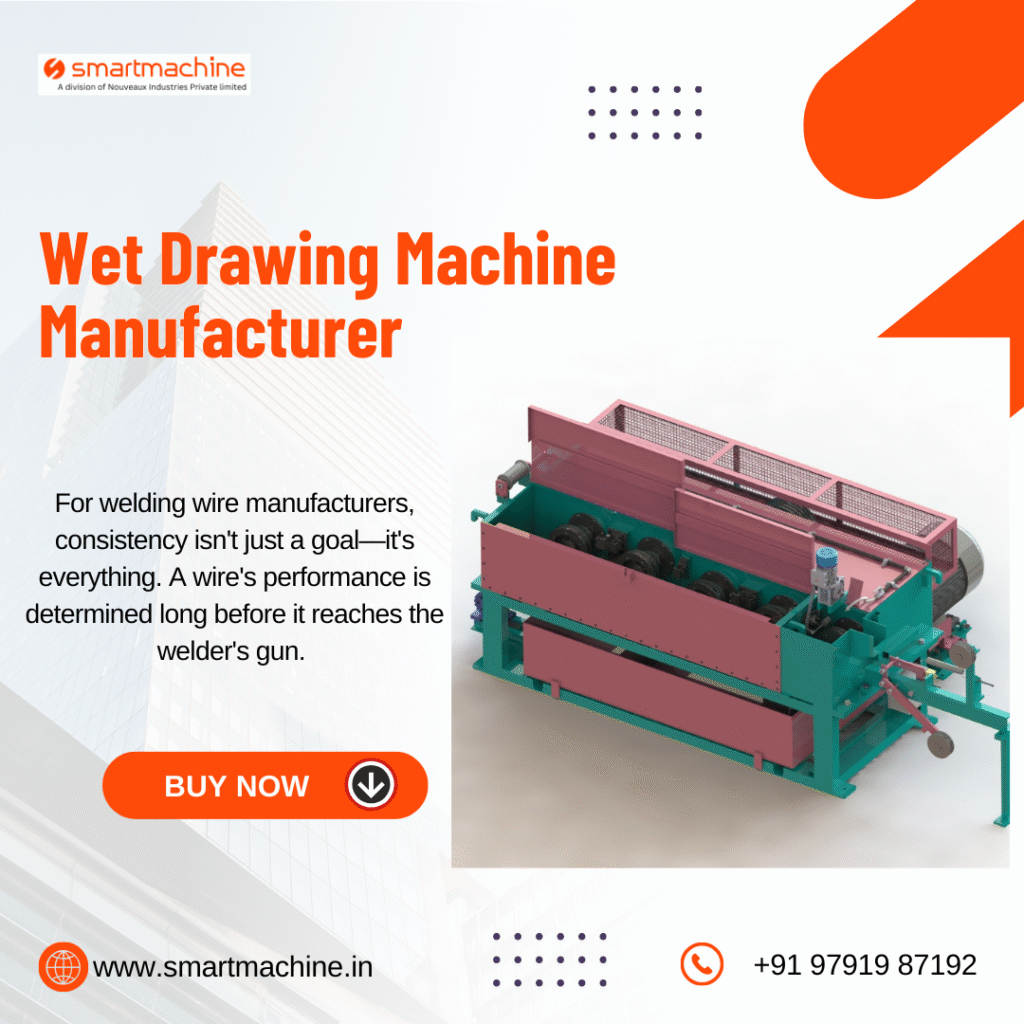In the world of advanced manufacturing, the production of fine and ultra-fine wire is a discipline of precision. These wires, often thinner than a human hair, form the vital nervous system of modern technology, found in everything from medical stents and micro-electrodes to the miniature coils in your smartphone and electric vehicle.
Producing such delicate yet high-performance wire is impossible with standard drawing methods. This is where wet drawing machines prove not just beneficial but absolutely essential. Let’s explore why this specialized technology is the cornerstone of fine wire production.

What is Wet Wire Drawing?
First, let’s distinguish between dry and wet drawing.
- Dry Drawing: Typically used for thicker wires. The wire is pulled through a single die at a time, using a solid lubricant like soap powder. It’s effective for larger diameters but generates significant heat and offers limited control for fine gauges.
- Wet Drawing: Designed for fine and ultra-fine wires. The process involves pulling multiple wires simultaneously through a series of dies submerged in a liquid lubricant-coolant mixture—hence the name “wet” drawing.
This fundamental difference in process is what unlocks the capabilities for fine wire production.
Why Wet Drawing Machines Are Non-Negotiable for Fine Wire
1. Superior Cooling and Heat Management
As wire is drawn through a die, immense friction is generated, creating heat. Excessive heat is the enemy of fine wire production. It can:
- Anneal the wire prematurely, altering its mechanical properties.
- Cause inconsistent grain structure, leading to weak spots.
- Damage the wire’s surface finish and even break it.
How wet drawing solves this: The entire drawing process is immersed in a recirculating coolant. This provides continuous and exceptional heat dissipation, keeping the wire and dies at a stable, controlled temperature throughout the multi-stage reduction process. This is critical for maintaining the wire’s metallurgical integrity.
2. Exceptional Lubrication for Surface Quality
The surface finish of a fine wire is paramount. Any micro-scratches, scratches, or imperfections can lead to failure in its final application (e.g., a broken wire in a medical device).
How wet drawing solves this: The liquid lubricant used is specially formulated to create a perfect hydrodynamic film between the wire and the die. This drastically reduces friction and prevents metal-to-metal contact, resulting in an impeccably smooth, bright, and defect-free surface finish that dry drawing simply cannot achieve.
3. Achieving Ultra-Fine Diameters with Precision
Pulling a wire down to diameters of 0.10 mm, 0.05 mm, or even smaller requires incremental, controlled reduction across many stages. A wet drawing machine is essentially a precision engine for this purpose.
- Multi-Die Process: These machines are designed with multiple capstans (blocks) and dies in a single, compact unit. The wire is reduced gradually at each stage.
- Fine-Tuned Control: Modern wet drawing machines offer precise control over speed, tension, and capstan synchronization. This ensures the wire is drawn evenly without stretching or breaking, allowing for consistent tolerances down to the micron level.
4. Enhanced Efficiency and Productivity
While designed for precision, wet drawing is also highly efficient.
- Multi-Wire Production: Most wet drawing machines are multi-line machines, meaning they can draw several wires (often 4 to 24 or more) side-by-side simultaneously through the same lubricant bath and set of dies. This multiplies output without a proportional increase in floor space or energy consumption.
- Continuous Operation: The design allows for processing long lengths of wire from large spools with minimal interruption, maximizing uptime and yield.
5. Extended Die Life
Diamond dies, essential for fine wire drawing, are a significant operational cost. The heat and friction from dry drawing can quickly wear down or fracture these expensive dies.
The superior cooling and lubrication of the wet drawing process significantly reduce wear and tear on the dies. This extends their operational life, reduces downtime for die changes, and lowers the overall cost of production.
Applications Enabled by Wet Drawing
The precision made possible by wet drawing machines is what enables critical modern technologies:
- Electronics: Wire bonding in microchips, winding wires for miniature inductors and transformers.
- Medical: Guidewires, orthodontic archwires, surgical sutures, and micro-electrodes for neural applications.
- Automotive: Sensors and precision coils in fuel injectors and ABS systems.
- Telecommunications: Fine strands within fiber optic cables and miniature coaxial cables.
Conclusion: The Indispensable Link in the Chain
Attempting to produce fine and ultra-fine wire without a wet drawing machine would be like trying to perform microsurgery with standard tools—ineffective, imprecise, and ultimately futile. The wet drawing process is not merely an option; it is the fundamental technology that provides the cooling, lubrication, control, and efficiency required to manufacture the high-quality fine wire that modern innovation demands.
For any manufacturer serious about competing in the high-value fine wire market, investing in advanced wet drawing technology is not a choice—it is an essential prerequisite for quality, capability, and success.
